- Foods
- Fashion
- Jewelry
- Industrial
- Location Photo
- Model
- Image Manupulation
- Company
- Contact Us
Image Processing
Precise photography that takes image processing into account improves the quality of the final product.
Image processing covers a wide range of tasks, including adjusting brightness, contrast, and color, repairing scratches, stains, and removing reflections, as well as transforming shapes and compositing with other images.
Depending on the processing required, we will use the most suitable approach and method. What we aim for is a "natural finish that does not feel like image processing". Our greatest strength is being able to capture the best materials for image processing from the shooting stage. Here we will introduce part of our image processing workflow.
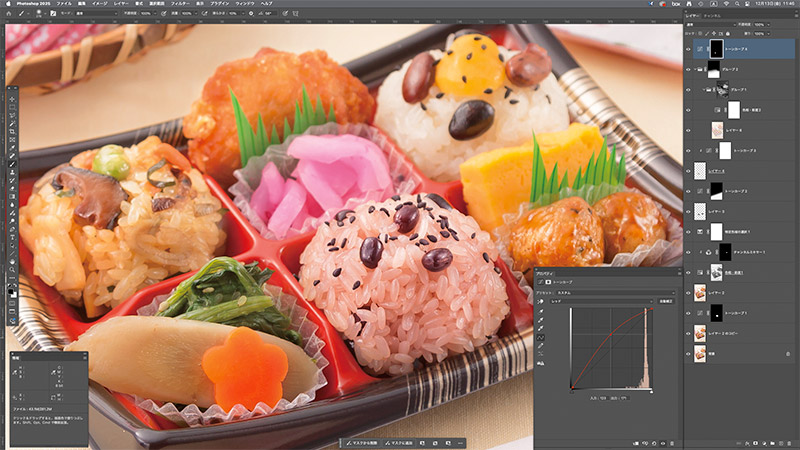
Accurate color management for your monitor
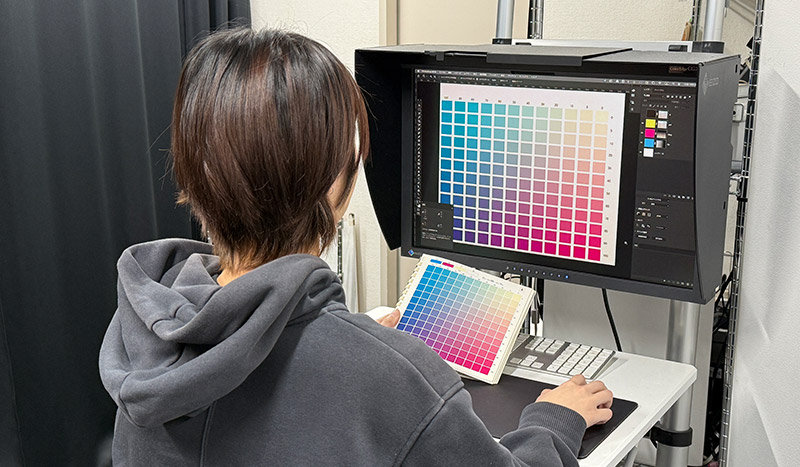
Image processing requires that the monitor is accurately aligned. We not only use a calibration monitor, but also regularly check and adjust the monitor to see if there is any error with the DIC chart.
Numerically controlled color correction
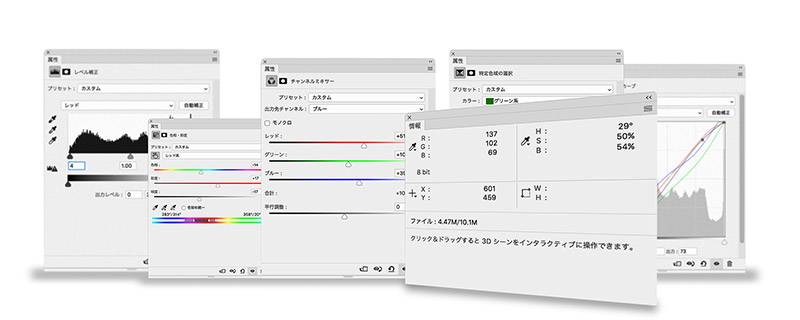


Color correction is performed after accurately adjusting the white balance and adjusting the brightness and contrast. When matching the colors in the finer details, if the actual subject is close by, I can look at it, but there are many cases where the actual object is not close by. For this reason, I try to create a color sample when shooting. If I don't have time to create a sample image, I either take a photo with my iPhone along with a color chart, or find the closest color on a DIC chart and make a note of it. This is to ensure that I can faithfully match the colors down to the finest details even when the actual object is not nearby.
Creating CMYK data with printing in mind
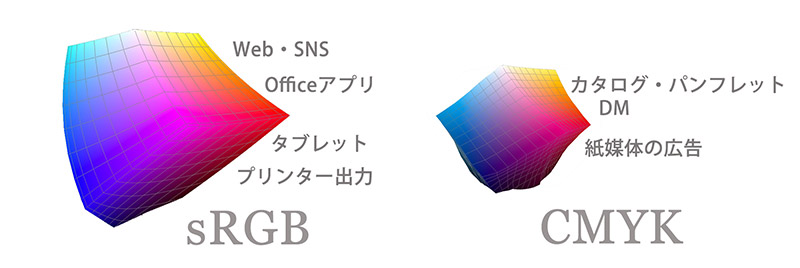
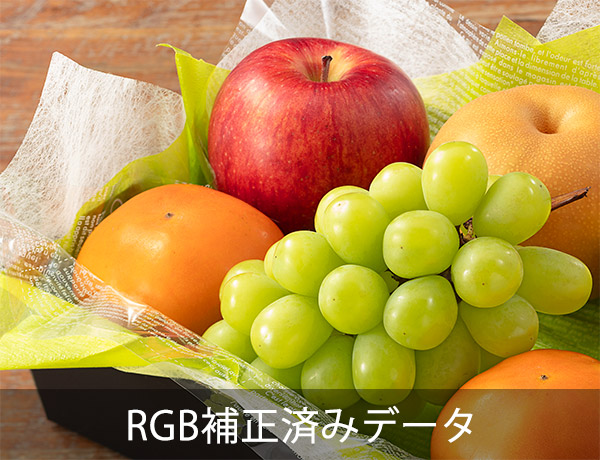
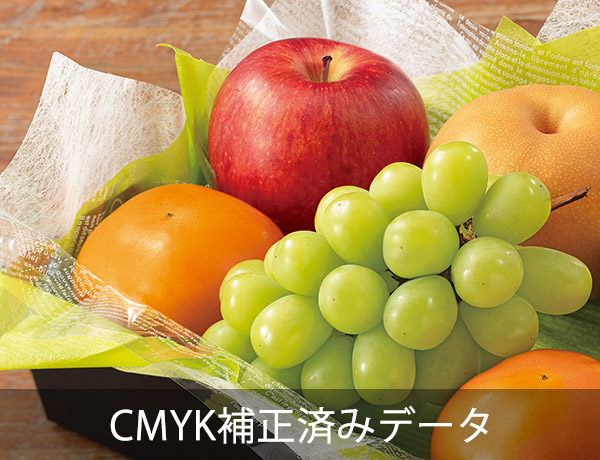
It is a well-known phenomenon that colors look beautiful when viewed as RGB data, but become dull or dull when converted to CMYK data for printing. In particular, vivid neon and pastel colors, orange fruit, and emerald jewelry can be expressed in RGB, but when converted to CMYK for printing, the colors become dull and gradation is lost. The reason for this is that the CMYK color gamut is narrower than the RGB color gamut. Colors outside the color gamut cannot be reproduced.
At Avenue A, we have solved many of these problems by making full use of correction tools that are not normally used, such as channel mixers and calculations, which have been around for decades since the early days of digital, and by reviewing the lighting during filming.
Normally, CMYK conversion is not the photographer's role, but in order to ensure good printed photographic results, Avenue A delivers many of the photographs used for printing in CMYK.
※CMYK images have been reconverted to RGB for display purposes.
Delivery is 8 sizes including master
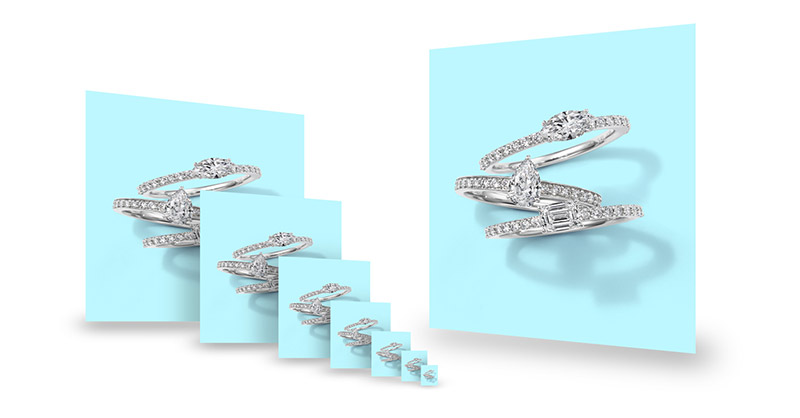
We can deliver the finished data in RGB and CMYK, and in various file formats such as EPS, TIFF, JPEG, PNG, and PSD. In addition, to prevent problems caused by using images that are too large for the medium due to the increasing pixel count of digital cameras, we deliver data in 8 sizes, including the largest master size. When using the data, please use data that is as close to the size as possible. To prevent overwriting, the data in the 8 sizes is written in the file name and the folders are divided by size. For Mac, color labels are also attached.
High-precision cutting

Cutting out is a basic task in image processing. It is necessary not only for photos to be used for cutting out, but also when compositing photos. Even in the case of square plates, the result will look better if you correct the images individually after cutting them out. When correcting jewels, all the stones and metals are cut out and corrected separately. This kind of detailed work and effort leads to quality.
Expand your expression with shadow-filled cutout photos

There are four main reasons why we recommend using Shadow Iki cutout photos.
- Since there is no color bleeding into the background like with square printing, the product itself looks beautiful in the photograph.
- The background can be changed to any color, not just white, black, or gray. You can freely adjust the color, saturation, and brightness.
- It can be composited with various background materials.
- It can also be used as a simple cut-out photo (the product and shadow are on separate layers, so you can easily remove the shadow).
You may be asked to take image photos on a square plate against a color background. However, please be aware that while achromatic backgrounds (black, white, or gray) would be fine, colored or patterned backgrounds will result in cloudiness and reflections on the product no matter how excellent the lighting or set used, and that this will place various constraints on image processing and the subsequent design process.
With shadow cutout photos, you can freely choose the background while preserving the beauty of the product. You can easily adjust the background color to harmonize with the finished overall design.
Free color conversion

To create color variations, two images are taken with different contrasts. Image processing begins by precisely cutting out the area to be color-changed, creating a mask, and then using the two images taken to change the color. This is relatively easy if the brightness levels are similar, but if the brightness levels are different, it takes some effort. Extreme brightness changes such as from white to black or black to white, which were previously difficult, can now be made by taking the images.
Separate shots with attention to detail

Separate shots and composites are taken with the camera fixed on a tripod, with lighting and parts of the subject changed, and then the best parts of each shot are cut out and superimposed using image processing. This method is also used when it is difficult to take a photo in one shot. Even our photos that appear to be "uncomposite" at first glance are often made by combining separate shots.
For example, take a photo of a bubbly drink such as champagne or carbonated drink. If there is only one glass, it is relatively easy, but if there are several glasses, it is impossible to pour them at the same time. In such a case, pour them in order, take a photo at the best possible condition each time, and later combine the images to create a single image. However, with champagne, it is not so simple. When pouring into a glass, bubbles form vigorously, and the bubbles form splashes on the liquid surface and adhere to the inside of the glass, which does not look beautiful. To deal with these splashes, you can either wipe the inside of the glass without moving it, or use the data of the first empty glass. A good liquid surface is also required. In the example, four photos are composited for just one glass of champagne.
Our studio often photographs jewelry and food, and we have accumulated skills by performing many difficult cutouts while processing images of items such as detailed cutouts of chains, products with strong reflections, and transparent packages. We believe that excellent image processing is achieved when the finished product is not immediately obvious that image processing has been used.